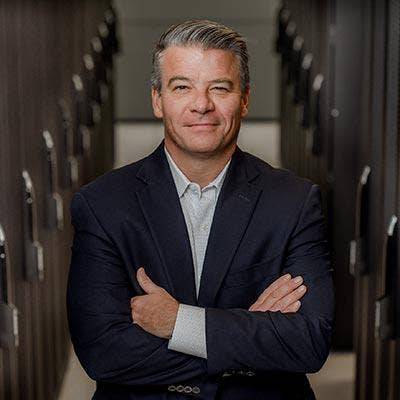New Flexential CEO Chris Downie: 'We Are A Leader In The Tier 2 Cloud Market'

Cloud Futures
Flexential, previously known as Peak 10 + ViaWest, believes that the newly named company is a leader in the Tier 2 cloud market and ready to take on the competition – not to mention, new partners and end customers.
Peak 10, based in Charlotte, N.C., completed its $1.67 billion acquisition of fellow cloud provider ViaWest, which was headquartered in Greenwood Village, Colo., in August. Since then, the company has been integrating its sales support and operations, and creating a unified partner program.
Separately, both companies were channel-focused cloud providers, but together, the freshly-formed Flexential wants to help partners and their clients fully realize the cloud opportunity, Chris Downie, CEO of Flexential, told CRN.
Here's what Downie has to say about the firm's strategy and plans:

How has the coming together of Peak 10 and ViaWest changed the company's place in the overall cloud provider market?
I think it's given us scale in terms of existing customer base, but also the ability to prospect because we have 41 [data center] facilities. We now have a true national platform, from Portland, Oregon, to Fort Lauderdale, Florida. We really look at ourselves as a leader in the Tier 2 cloud market.
We are also in a lot of Tier 1 markets and a lot of our facilities are strategically relevant to markets that we aren't in -- we have California surrounded, for example, and we have gotten closer to New York, New Jersey, and Philadelphia. There's a lot more resources and options available to customers and prospective customers, from colocation, to cloud, to network.

What does Flexential bring to the table for partners and customers?
Core to our value proposition is reliability and resiliency, but that's table stakes to some extent. We think we bring proximity to the equation with 41 data centers around the country. There's a lot of focus on latency these days, and the ultimate cure for latency is proximity. Hyperscalers certainly bring a lot of resources to customers, but certain applications don't fit in the hyperscale domain. I think in many ways, it is about geography coupled with the capability and the whole host of services we bring to bear in our environments. [Partners and customers] know who their support resources are that they can be relied on, day in and day out, and they also know where their workloads are right out of the gate. With hyperscale [providers], even for large enterprises, it's hard to know exactly who your contact should be and how to address problems. That human touch gets lost with hyperscalers.

What do you want partners to know about the recent rebrand?
In a lot of ways, we are a new company with capabilities that are new for both legacy companies. Peak 10 was very strong in the East and couldn't really satisfy [customers] in the West, and vice versa for ViaWest. With the new platform, we can have any conversation as it relates to any demand set. We really want people to appreciate the value built into the new brand and appreciate the new capacity that we have in our national platform, as well as the investments we made to the utilities that support those environments from the network, to cloud resources, to managed solutions.
We think we are differentiated in terms of our scale and our product suite. We believe we have a more comprehensive product suite than many of our peers, so a lot of our focus going forward is going to be on building awareness around those key pillars.

How has the integration between Peak 10 and ViaWest been going since August?
It has gone really well. It's still early days in a transaction of this nature, but the first part of integration was laying out the plan, and we were really focused on getting to our first sales kickoff as a combined company with a single sales team. We did that last week -- we have over 200 people in our front office in sales support and operations, and in marketing that came together. It was an exciting event for us. It was really the first major step of the integration.
In 2018, there's going to be a lot of focus on systems because we really want to come out of this year with one of the best back offices in the business.

Have the two separate partner programs been integrated yet?
That was a key part of our sales integration process. Before our programs were integrated, we realized there were a lot of common partners among the two companies, but there were also a lot of new one because certain partners have an emphasis on the East or West [Coast] or a particular product line. The great thing is, we were able to incorporate the [new program] into our sales kickoff. We had partner marketplace where we brought in 12 separate partners that had the opportunity to collaborate with our sales teams. Partners have been a significant component of the integration process.